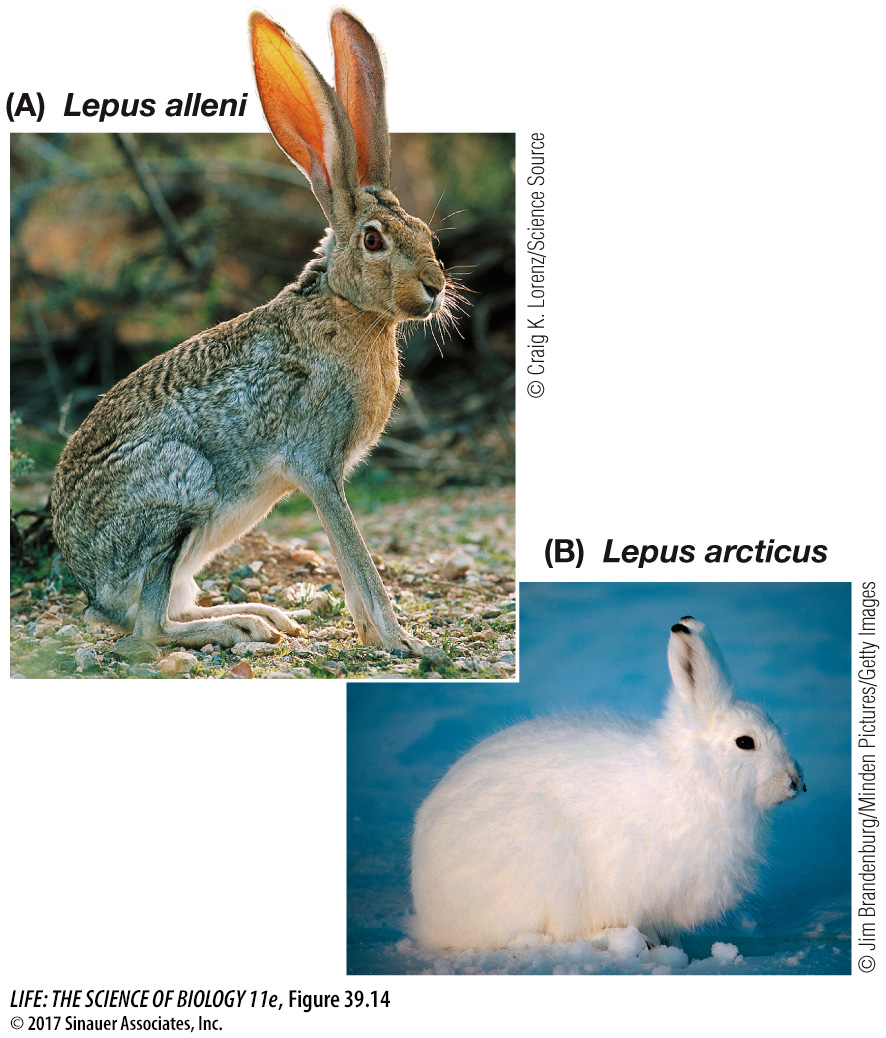Endotherms respond to cold by producing heat and adapt to cold by reducing heat loss
838
When environmental temperatures fall below the lower critical temperature, endotherms increase metabolic heat production to compensate for heat loss. Mammals can accomplish this by shivering and/or nonshivering heat production. Birds use only shivering heat production. Shivering uses the contractions of skeletal muscles to convert ATP to ADP, with the energy from this process released as heat. Shivering muscles pull against each other so that little movement other than a tremor results. “Shivering heat production” is perhaps too narrow a term, however; increased muscle tone and increased body movements also contribute to increased heat production in cold environments.
Most nonshivering heat production occurs in specialized adipose tissue called brown fat. This tissue looks brown because of its abundant mitochondria and rich blood supply. In brown fat cells, a protein called thermogenin uncouples proton movement from ATP production, allowing protons to leak across the inner mitochondrial membrane rather than having to pass through the ATP synthase and generate ATP (review the discussion of brown fat and the chemiosmotic mechanism in Key Concept 9.3). As a result, metabolic fuels are consumed without producing ATP, but heat is still released.
Pads of brown fat are found in newborns of many mammalian species. Brown fat is also commonly found in adult mammals that are small and acclimatized to cold, and in mammals that hibernate. Recently it has been discovered that adult humans have small amounts of brown fat distributed around the body and that its metabolic activity is stimulated by cold exposure. One study found less brown fat activity in obese than in lean individuals, leading to the hypothesis that individual differences in propensity for weight gain may be related to the amount of brown fat in an individual, as described in the opening stories of Chapters 9 and 40.
In addition to their ability to produce heat, endotherms that live in cold climates have evolved adaptations to reduce their heat loss. Heat is lost from the body surface, and cold-

The most common and important means of decreasing heat loss is to increase thermal insulation. Animals adapted to cold climates have much thicker layers of fur, feathers, and/or fat than do their warm-
The ability to decrease blood flow to the noninsulated skin is an important thermoregulatory adaptation for cold-
Activity 39.3 Thermoregulation in an Endotherm
www.life11e.com/